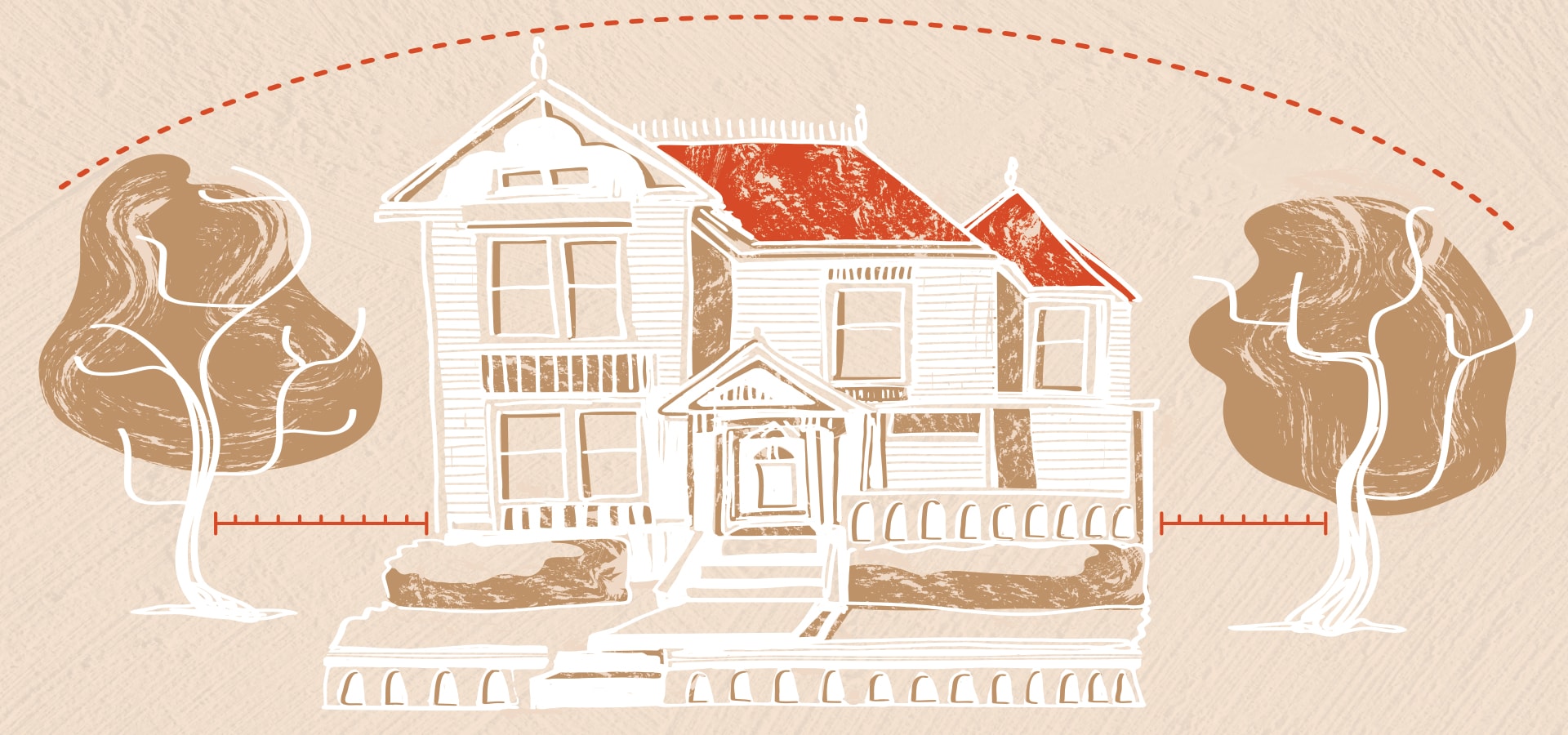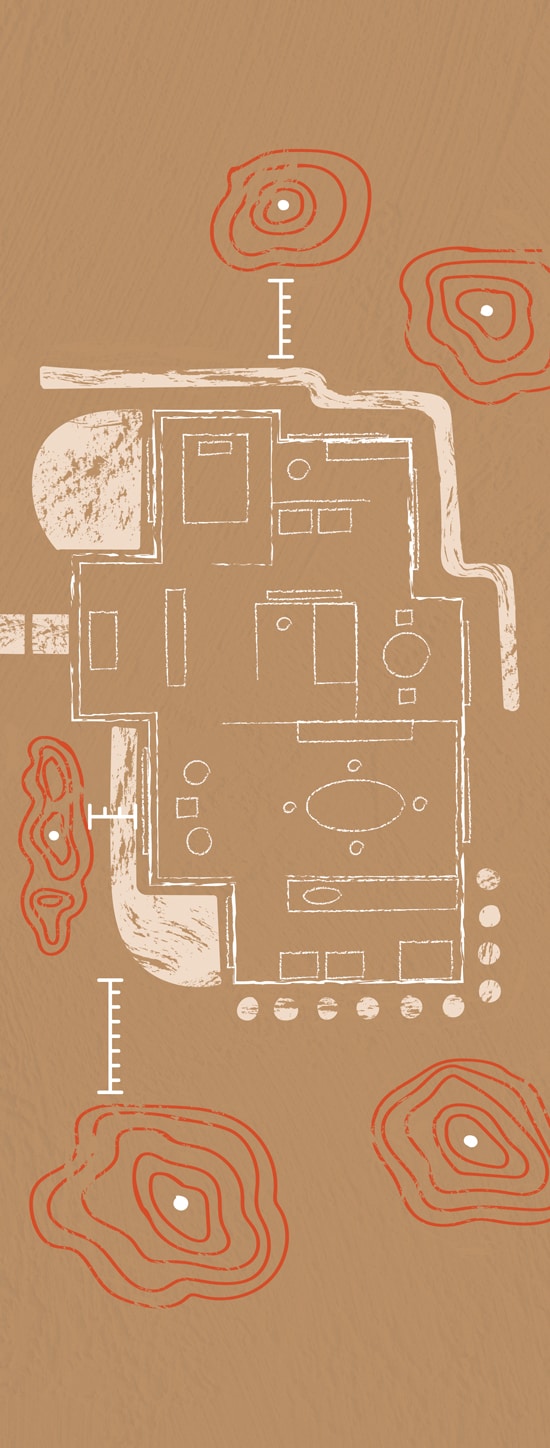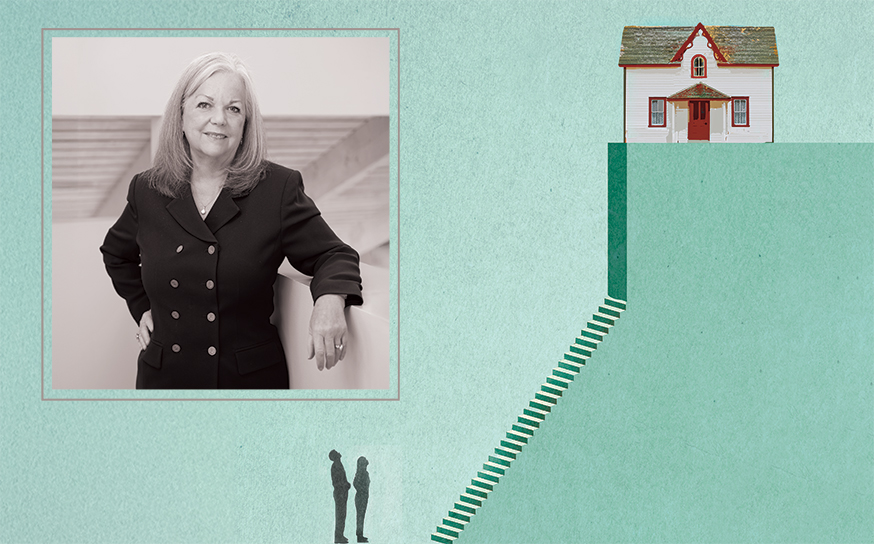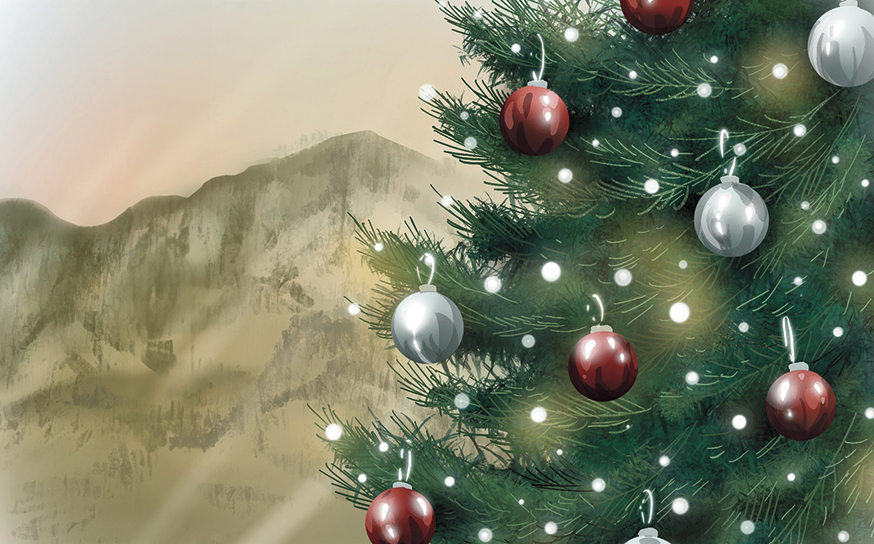
Learn What Precautions You Need to Take to Protect Your Home Against Wildfire
Tis’ the season.
-
CategoryHomes
-
Written byAnne M. Russell
The Woolsey fire that swept through the western end of the Valley one year ago was either a triumph or a tragedy, depending on how you measure it.
In terms of saving lives, emergency responders did a remarkable job. More than 250,000 people were evacuated as the fire spread rapidly toward the Pacific from the Santa Susana Pass area. Three lives were lost. Compare that to Northern California’s Camp Fire that broke out the same day, November 8, where 89 people died.
But when you look at the toll the Woolsey Fire took on property, the story becomes more bleak. The fire incinerated 1,648 buildings, for a shocking total of $6 billion in damage. It scorched 96,949 acres, including more than 80% of the National Park Service land in the Santa Monica Mountains, and killed P-64, one of the mountain lions who lived there. In some neighborhoods, the fire claimed every home; in others, it seemed capricious, burning only one or two houses out of dozens on a block.
Most of the Valley falls within CAL FIRE’s designated Extreme Fire Hazard Zone. CoreLogic, a property-data-analysis company, states in its 2019 Wildlife Risk Report that it considers 121,589 Los Angeles residences to be at extreme to high risk for destruction by wildfire, ranking LA as the number-one risk area in the nation. “It’s no surprise that California tops the list of the most homes at high-to-extreme wildfire risk, given the state’s size and population density, as well as the popularity of residential expansion into the wildland-urban interface,” says Tom Jeffery, senior hazard scientist at CoreLogic. So the question of whether there will be another large, destructive wildfire is not if but when.
LA County Fire Captain Tony Imbrenda notes that this year the period of highest fire danger has been delayed somewhat by last winter’s generous rains. “There have been five or six brush fire starts so far,” he says, “but we’ve been able to knock them down and stop them from getting big.” He adds, however, that the number of days when the fire-spreading Santa Ana winds blow has increased over time and that his department now plans for 10 to 15 wind events lasting up to a week at a time.
Although wildfire’s behavior may look arbitrary or even willfully vicious, fire scientists say that’s an illusion and in reality there’s a lot you can—and should—do to make sure your home doesn’t burn. To begin, change your perspective: Look at your property the way fire does: as fuel, pure and simple. “A house is the most flammable thing in any given area,” says Captain Imbrenda.
Harden Your Yard
“Hardening” tactics can stop wildfire from getting a toehold. Complying with mandatory brush-clearance regulations is just the beginning.
“Your opportunity to save your home is huge,” says CAL FIRE Southern Operations Battalion Chief Lucas Spelman. “Being diligent with maintenance is the number one thing: Keep cleaning up leaf litter, keep things watered. Minimize fuel against the house.” In other words, plantings surrounding your house should be low-growing. Trees, tall shrubs and vines can create a “fire ladder” that allows flames to climb upward to the roof.
“The most important thing you can do is examine the zero to 5 feet around your house,” advises Marti Witter, fire ecologist for the Santa Monica Mountains National Recreation Area. “Make sure there’s nothing that can transmit flame to the structure.” Fire experts’ rule of thumb: If something is attached to the house, it’s part of the house. You may think of a storage shed, carport or barbecue area as separate, but fire doesn’t, and if those structures are highly flammable fire will use them to reach the house.
While it may seem like fire descends on neighborhoods as massive walls of flame, what in fact sets individual homes ablaze is more likely a wind-driven firebrand, an ember smaller than a pinky
finger. The embercast that rains down as much as a mile ahead of a wildfire contains thousands of tiny fragments of burning matter that lodge in and ignite things like patio furniture cushions, stacks of firewood, and dry leaves. “It’s the ember storm that causes the most homes to be lost,” says Witter.
If your property backs up into open space, make sure your landscaping isn’t structured so that it creates a path that leads fire to your house—an evergreen hedge along a walkway to the back door, for example. Break up your landscape vertically and horizontally by interrupting plantings with nonflammable features like concrete, decomposed granite or stone paths.
Certain trees are more flammable than others or grow in patterns likely to spread fire to the roof. Conifers—including pines, firs, junipers and cypress—catch fire relatively easily because of their high resin content. Cypresses especially, because of their low-growing branches, spread fire upward. All trees should be pruned frequently to remove dead branches as well as branches in the lower third of the tree to prevent the fire-ladder effect. Shrubs also need to be pruned and cleared of dead material.
Witter cautions, however, about going to extremes. “When you remove all barriers to airflow it may actually make the situation worse,” she notes. “It gives fire an unobstructed path for the ember load.” Instead, you want trees to be spaced apart from each other and away from the house. Clean up fallen leaves, needles, twigs, fronds and other dry debris. “A rake is more effective than a chainsaw,” Witter notes.
When an emergency strikes, firefighters, just like medical workers, go into triage mode, looking for homes with well-manicured, well-watered yards that have lots of clearance around the house. “As a firefighter, I’m going to choose the house that I know I can save,” says Jim Prabhu, a veteran firefighter and cofounder of Fire Defense Service.
Protect Your House
Making your house more fire resistant may require a larger investment, especially if you still have a wood or wood-shingle roof. But replacing a wood roof with tile, metal or fiberglass composition is worth every penny, according to Chief Spelman. “There’s just no way to stop a fire with a wood roof. It’s like a catcher’s mitt for embers.”
“What in fact sets individual homes ablaze is more likely a wind-driven firebrand, an ember smaller than a pinky finger.”
The roof is also vulnerable to fire starting in debris-clogged gutters or in the vents under the roof’s edges—that is, the eaves. Both of these problems can be addressed by adding fine metal screen covers to prevent debris from accumulating or embers from entering through the house’s external vents. The underside of your decking needs the same precautions: Decking should be protected with screening underneath. Watch where leaf debris tends to accumulate—that’s a clue as to where embers will pile up.
You also want to keep embers out of the garage where some of the most flammable materials tend to be stored (gasoline, propane, leftover paint, etc.), so make sure the garage door’s weather stripping is in good condition and doesn’t allow wind to carry embers in underneath it.
The other major investment to consider is double-pane windows to fight the threat of thermal radiation (i.e., heat) to your home’s interior. The effect of intense heat can cause flammable materials to ignite as the fire approaches. Furnishings, especially lightweight curtains against the windows, can start to burn from the extremely hot, dry air pushing ahead of the flames. When fire threatens, move everything away from the windows before you evacuate.
And, of course, in red-flag fire weather you want to make sure your car is parked in the driveway facing toward the exit with a full tank of gas and that you have your “go bag” of essentials (food, water, flashlight, batteries, masks, first aid, cash, ID) packed and ready. When you leave, open your security gates and leave your home’s entrances unlocked so firefighters don’t have to break your door down.
Get Professional Help
You can download CAL FIRE’s Ready for Wildfire app for a DIY safety checklist. There also are professionals who can do a fire-risk assessment for you and help you implement firefighting strategies.
Brothers John, Jim, and Michael Prabhu, who grew up in Malibu, founded Fire Defense Service a year ago with their cousin Danny Cortazzo, a retired fire captain, after experiencing the Woolsey Fire firsthand. Jim, who has spent 20 years as a firefighter with Los Angeles City Fire, says, “The Woolsey Fire was very personal to us. We saw a lot of homes burn that could have been saved because they had a pool. It was pretty frustrating.”
Their Fire Defense Service (FDS) starts with a risk assessment. “When we do an initial assessment, it lets homeowners look through my eyes as a firefighter,” says Jim Prabhu. “I walk the property and fill out a site assessment report with recommendations as to what they can do to make their house more firesafe.”
But the Prabhus’ primary service is leasing and maintaining pumps and hoses that capitalize on home swimming pools as a water source. Their patent-pending systems use fire department-compatible components to tap into home swimming pools—typically 16,000 to 50,000 gallons—to defend property. (By contrast, fire trucks usually carry only 500 gallons of water.)
Although they train homeowners in how to use their system, the idea is that firefighters will see the FDS sign at the property entrance and know that the property has been fire hardened and that there are resources available to them—an obvious asset to the property owner. FDS is currently working with a local insurance broker to educate insurers about their service—and hopefully get their clients a break on homeowner’s coverage and premiums.
Although wildfire has always been a fact of life in California, fire is now different. “There has been a change to a longer and more aggressive fire season,” says Captain Imbrenda. “We’re seeing more intense fire behaviors.”
The Insurance Burn
Even if you didn’t lose property in the Woolsey Fire, you may have received increased homeowner’s insurance premiums or even a policy nonrenewal. Here we offer some guidance.
Sue Williams, whose Sylmar area home was threatened but undamaged by December 2017’s Creek Fire (and who works for VB), learned that her 20-year-old homeowner’s policy had been canceled via a letter from her insurer. “Although you know people are having problems with insurance, it’s still a shock when it happens to you,” she says. Williams says that in her two decades of paying premiums, she never made a fire-related claim.
Many Southern Californians were already facing onerous premium increases before the Woolsey Fire, but after the fire, more insurers decided not to offer insurance at any price. According to a report from the California Department of Insurance, the number of homeowners in fire-prone areas who lost coverage increased 10% between 2017 and 2018—again, before the Woolsey Fire.
If you find yourself suddenly uninsured, your best bet may be a California FAIR (Fair Access to Insurance Requirements) plan. This state-sponsored coverage is less comprehensive than traditional insurance, but does provide fire coverage, even in high-risk areas. At the same time, work with your insurance broker to appeal your current insurer’s decision, if possible, and buy additional private insurance to fill in FAIR’s gaps.
Emergency Kit
A list of fire-related items to have on hand—and know how to use in an emergency.
- Fire extinguishers
- Particulate respirators (i.e., a tight-fitting mask rated N95 or P100 by NIOSH, not a dust mask)
- Water hoses that can reach all areas of your property
- A self-closing fire locker for flammable materials in the garage
- Fire-fighting tools like a McLeod, Rogue hoe, Pulaski axe, rake and shovel
- A swimming pool fire-pump system
- Fire-retardant gel or foam











